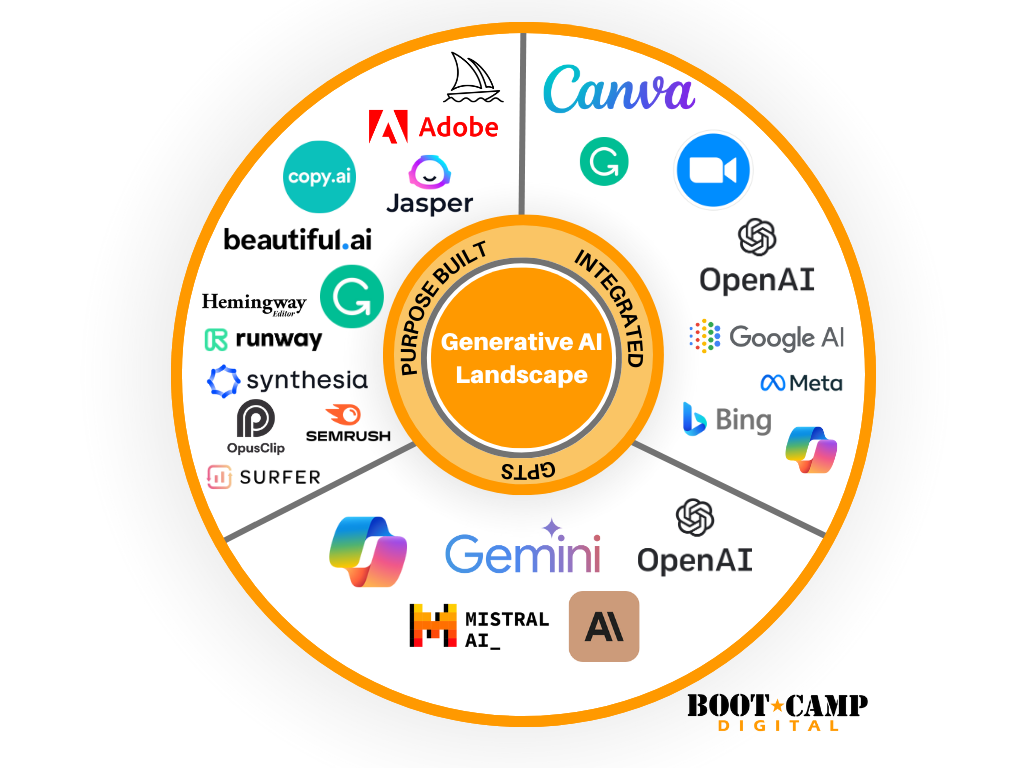
Introduction
Generative AI is evolving at an unprecedented pace, pushing the boundaries of creativity, automation, and problem-solving. As we step into 2025, AI tools are becoming more sophisticated, accessible, and efficient, influencing industries ranging from content creation to software development. In this blog, we explore the latest trends in generative AI tools that are shaping the future.
1. AI-Powered Content Creation Gets Smarter
The latest AI models are refining their capabilities in generating text, images, videos, and even music. Tools like OpenAI’s ChatGPT, Google’s Gemini, and Anthropic’s Claude are improving in contextual understanding, tone adjustments, and personalized content recommendations.
Key Advancements:
- More human-like text generation with better coherence.
- Advanced multimodal capabilities integrating text, images, and video.
- AI-generated content optimization for SEO and personalization.
2. AI-Driven Code Generation and Development
Generative AI tools like GitHub Copilot, Tabnine, and Code Llama are transforming software development by assisting in coding, debugging, and automating repetitive tasks. In 2025, AI-driven development is becoming more intuitive and collaborative.
What’s New:
- Enhanced code suggestions with real-time learning.
- AI-powered bug detection and auto-fixes.
- Integration of generative AI into low-code and no-code platforms.
3. Hyper-Personalization in AI Chatbots
Businesses are leveraging generative AI chatbots for customer support, sales, and marketing automation. With advances in large language models, AI chatbots in 2025 are more contextual, emotionally aware, and capable of understanding complex queries.
Unlock Hidden Features with These Prodigy Hacks
Emerging Trends:
- Sentiment analysis for personalized responses.
- AI chatbots with memory for better continuity in conversations.
- Voice-based AI assistants that mimic natural human interactions.
4. AI-Generated Video and Animation
Video content creation is undergoing a revolution with AI-powered tools like Runway, Pika, and Stability AI. In 2025, AI can generate high-quality animations, deepfake content, and even realistic 3D models with minimal human input.
Innovations to Watch:
- AI-generated videos from text descriptions.
- Real-time video editing with AI-driven enhancements.
- Deepfake detection tools to ensure ethical AI usage.
5. AI-Powered Design and Creativity Tools
Graphic design and digital art are being transformed by AI-powered design tools such as Adobe Firefly, Canva AI, and DALL·E. These tools allow designers and creators to automate tedious tasks while enhancing creativity.
Notable Features:
- AI-assisted design generation based on user preferences.
- Instant image upscaling and enhancement.
- Generative AI-driven 3D modeling and prototyping.
6. Ethical AI and Bias Reduction
With the rise of AI, ethical concerns and biases remain a critical focus. AI researchers are developing techniques to reduce bias and ensure fairness in AI-generated content.
Key Developments:
- Improved AI model transparency and explainability.
- Bias detection and mitigation frameworks.
- Regulations and guidelines for responsible AI usage.
7. AI-Powered Healthcare and Drug Discovery
Generative AI is playing a pivotal role in medical research, diagnostics, and drug discovery. AI tools in healthcare are advancing rapidly, helping scientists analyze vast datasets to create new treatments.
Latest Breakthroughs:
- AI-generated molecular structures for drug discovery.
- AI-powered medical imaging analysis.
- Virtual AI assistants for patient monitoring and diagnosis.
8. AI in Business Automation
From marketing automation to finance and HR, generative AI is streamlining business operations by automating tasks that were traditionally manual.
What’s Trending:
- AI-powered document generation and analysis.
- Predictive AI for business decision-making.
- AI-driven personalization in e-commerce and customer engagement.
9. AI and the Metaverse
The intersection of AI and the Metaverse is leading to the creation of hyper-realistic virtual environments. AI is being used to generate lifelike avatars, immersive 3D worlds, and interactive simulations.
Key Highlights:
- AI-driven world-building for virtual experiences.
- Personalized AI avatars for social interactions.
- Generative AI in gaming for procedural content generation.
10. The Future of Generative AI
As we move further into 2025, generative AI will continue to evolve, integrating deeper into various industries. The focus will be on making AI more ethical, user-friendly, and efficient, ensuring it remains a valuable tool rather than a disruptive force.
FAQs
1. What are generative AI tools used for?
Generative AI tools are used for content creation, software development, business automation, healthcare, design, and more. They help generate text, images, videos, and even code with minimal human intervention.
2. How is AI improving content creation?
AI is improving content creation by making text, image, and video generation more human-like, personalized, and SEO-optimized. It also enhances editing and creative ideation processes.
3. Are AI-generated videos replacing traditional video production?
While AI-generated videos are advancing rapidly, they are not entirely replacing traditional video production but rather complementing it by automating certain aspects and making content creation more accessible.
4. How is AI impacting business automation?
AI is streamlining business automation by handling repetitive tasks, improving decision-making with predictive analytics, and enhancing customer interactions with AI-driven personalization.
5. What are the ethical concerns surrounding generative AI?
Ethical concerns include bias in AI-generated content, misinformation risks, deepfake abuse, and privacy issues. Researchers and companies are working on frameworks to ensure responsible AI usage.
Generative AI tools in 2025 are shaping the future of technology, creativity, and business. Staying updated with these trends will be crucial for anyone looking to leverage AI’s potential effectively.